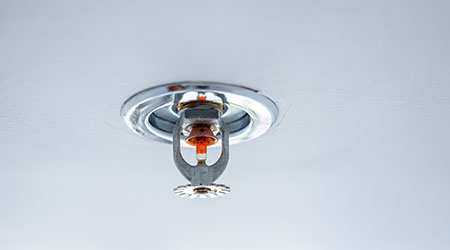Healthcare facilities have struggled to meet the challenges of the coronavirus pandemic over the last 15 months, and cybercriminals found relative ease in launching attacks on vulnerable targets. But while data breaches flood the headlines, they are not the only way cybercriminals can threaten patient safety.
Attacks on fire systems can create false alarms, loss of communication or denial of service, according to Health Facilities Management. A malfunctioning fire alarm system could interrupt patient care and compromise safety. The common thread for hackers is that any weak point in a building’s information technology infrastructure can be exploited and used as a pathway for attack.
Fire and life safety systems with cyber weaknesses have the potential to compromise safety, which is why the prospect of cyberattacks is being addressed in 16 NFPA codes and standards, including the National Fire Protection Association’s NFPA 72, National Fire Alarm and Signaling Code.

 Building Sustainable Healthcare for an Aging Population
Building Sustainable Healthcare for an Aging Population Froedtert ThedaCare Announces Opening of ThedaCare Medical Center-Oshkosh
Froedtert ThedaCare Announces Opening of ThedaCare Medical Center-Oshkosh Touchmark Acquires The Hacienda at Georgetown Senior Living Facility
Touchmark Acquires The Hacienda at Georgetown Senior Living Facility Contaminants Under Foot: A Closer Look at Patient Room Floors
Contaminants Under Foot: A Closer Look at Patient Room Floors Power Outages Largely Driven by Extreme Weather Events
Power Outages Largely Driven by Extreme Weather Events